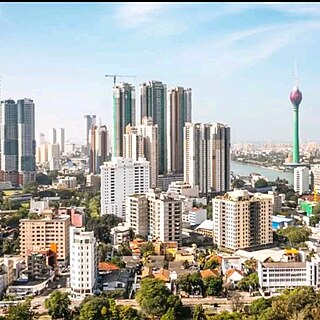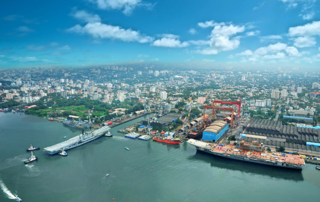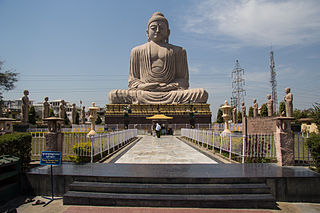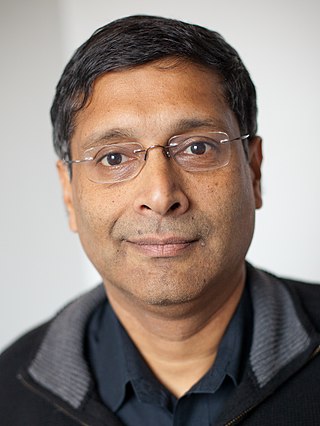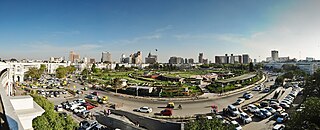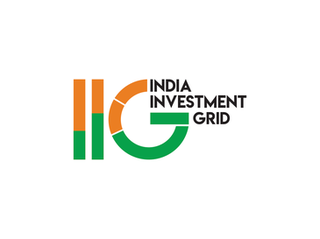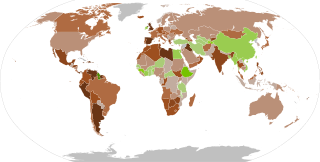Previous editions
Economic Survey of India 2020
The Economic Survey 2019–20 was tabled during the Budget Session of the Parliament on 31 January 2020 by Nirmala Sitharaman, Minister of Finance. [5] The survey was prepared under Krishnamurthy Subramanian, the Chief Economic Advisor (CEA) to the Government of India. The survey is also presented by the CEA during a press meet after it is tabled in Parliament. [6] [7] [8]
This year the survey was printed in lavender, the same colour as the 100-rupee note, symbolizing the integration of old and new. [9] The broad theme for the survey is "Ethical Wealth Creation". The document outlines strategies for making India a $5 trillion economy by 2024–25. [10] [11] This includes strengthening the invisible hand of the Indian economy through trust in pro-business government intervention and trust in the markets; [12] while at the same time moving away from "pro-crony" policy and focusing on ethical wealth creation. [8] [13]
The survey covers the economic performance India in 2019–20 including fiscal developments, external sector developments, monetary management and financial intermediation, inflation, sustainable development and climate change, agriculture and food management, industry and infrastructure, services sector, social infrastructure, employment and human development. Some of the key points raised by the survey were the need for grassroots entrepreneurship, pro-business and pro-market differentiation, policies that do not undermine the markets, job and growth creation, improving the ease of doing business in India, creation of early warning health system for the NBFC sector, privatization and thalinomics. [14]
Ethical wealth creation
The importance of "Ethical Wealth Creation" as a basis for the economy is emphasized upon. Reference to the Arthashastra , Tirukkural and The Wealth of Nations is made. [15] [16] [17] Through these texts, the Survey documents that ideas of wealth creation are rooted in India's rich traditions. The Survey notes that India's past dominance in economic matters was not by chance, but design. [13]
Highlights
Some of the key points of the Economic Survey 2019–20 are: [5]
- The survey projects India's growth at 6–6.5% in the next fiscal year starting from 1 April 2020. [18]
- The survey provides facts to show that India's GDP figures are genuine. [13]
- The industrial growth for the current year has been listed as 2.5% while the agricultural growth is 2.8%. [18]
- Total formal employment has increased from 2011–12. About 2.6 crore new jobs were created between 2011–12 and 2017–18. [6]
- The survey has a section called thalinomics which shows an increase in affordability of a vegetarian thali by 29% and by non-vegetarian by 18% during 2006–07 to 2019–20. [19]

Punjabi style vegetarian thali served in a restaurant. - India is on a growth path that delivers sustainable development and has a holistic approach towards climate change. [5]
- India is on track to achieve its "Nationally Determined Contributions (NDCs) under Paris Agreement in accordance with principles Common but Differentiated Responsibilities." [5]
- India has emphasized on clean, enhanced and efficient energy systems, resilient urban expansion, and progressive transportation networks.
- All urban areas of 35 states and union territories have become open-defecation free and percentage of waste processing has risen by over 40%. [5]
- The survey also acknowledged the efforts of Unnat Jeevan by Affordable LEDs and Appliances for All (UJALA) and the launch of India's initiative— Coalition for Disaster Resilient Infrastructure. [5]
- India has the second largest emerging green bond market in the world.
- The survey suggests the government to systematically withdraw from certain areas of the markets. [11]
- Easier ways to start new business, pay taxes and enforce contracts. [11]
- The Assemble in India for the world strategy to go hand in hand with Make in India. [20]
- The survey suggests mimicking the Chinese model for job creation. [20]
- Band Baaja Baaraat was given reference to show Indian entrepreneurship. [20]
The survey also had quotes from Shrimad Bhagavad Gita, Rigveda, Arthashastra and Tirukkural. [15] [16] [17] Data for the survey relied on information from sources such as Bloomberg, IIM(B), Forbes, IMF, World Bank, RBI, Ministry of Corporate Affairs, Insolvency and Bankruptcy Board of India, the United Nations, and Wikipedia, among others. [21] [22]
Economic Survey of India 2021
The Economic Survey 2020–21 was tabled during the Budget Session of the Parliament on 29 January 2021 by Nirmala Sitharaman, Minister of Finance. [23] The survey was prepared under Krishnamurthy Subramanian, the Chief Economic Advisor (CEA) to the Government of India. [23] The CEA also presents the survey during a press meet after it is tabled in Parliament. [24]
The 2020-21 survey has been conducted in the background of the COVID-19 pandemic and the economic impact of the COVID-19 pandemic in India. A foundational theme of a survey as a result of the pandemic has been "Saving Lives and Livelihoods". The survey goes on to outline epidemiological and economic research related to lockdowns and minimizing losses when uncertainty is very high, in this case the loss being the loss of human life. [25] The survey also notes how a "healthcare crisis can get transformed into an economic and social crisis". [26]
Some of the key points of the Economic Survey 2020–21 are:
- The survey launches a 'Bare Necessities Index'. [27]
- India is witnessing a V-shaped economic recovery. [28]
- The survey covers over-regulation in the Indian economy. The example of the time taken to close a company in India, about 1600 days, was given. [29]
- The survey dedicates a chapter to discuss India's sovereign credit rating. [30]
- India needs to increase spending on research and development. India ranks 48th among 131 countries in the Global Innovation Index. However India is underperforming in innovation in terms of its GDP. [31] India's Gross Expenditure on Research and Development (GERD) is suitable according to GDP but lacks behind a number of countries. [31] India can successfully convert investment into innovation better than most countries. [31]
- Ayushman Bharat Yojana has had positive impact in healthcare. [29]
The survey has quotes and explanatory anecdotes from Mahabharata, Rabindranath Tagore, Raghuvansham, A.P.J.Abdul Kalam, Mohandas K. Gandhi, The Jungle Book (look for the bare necessities, the simple bare necessities), a recent India versus Australia cricket match, Tirukkuṟaḷ, 3 Idiots, Malgudi Days and Martin Luther King Jr. [32] [29]

